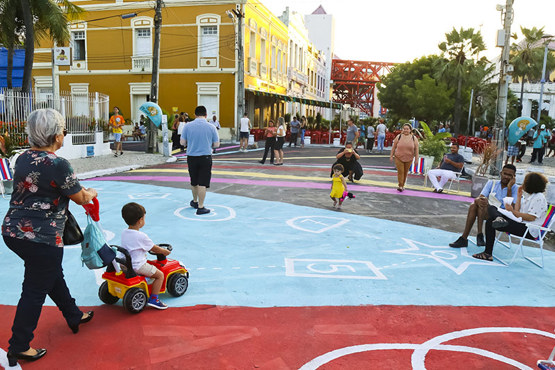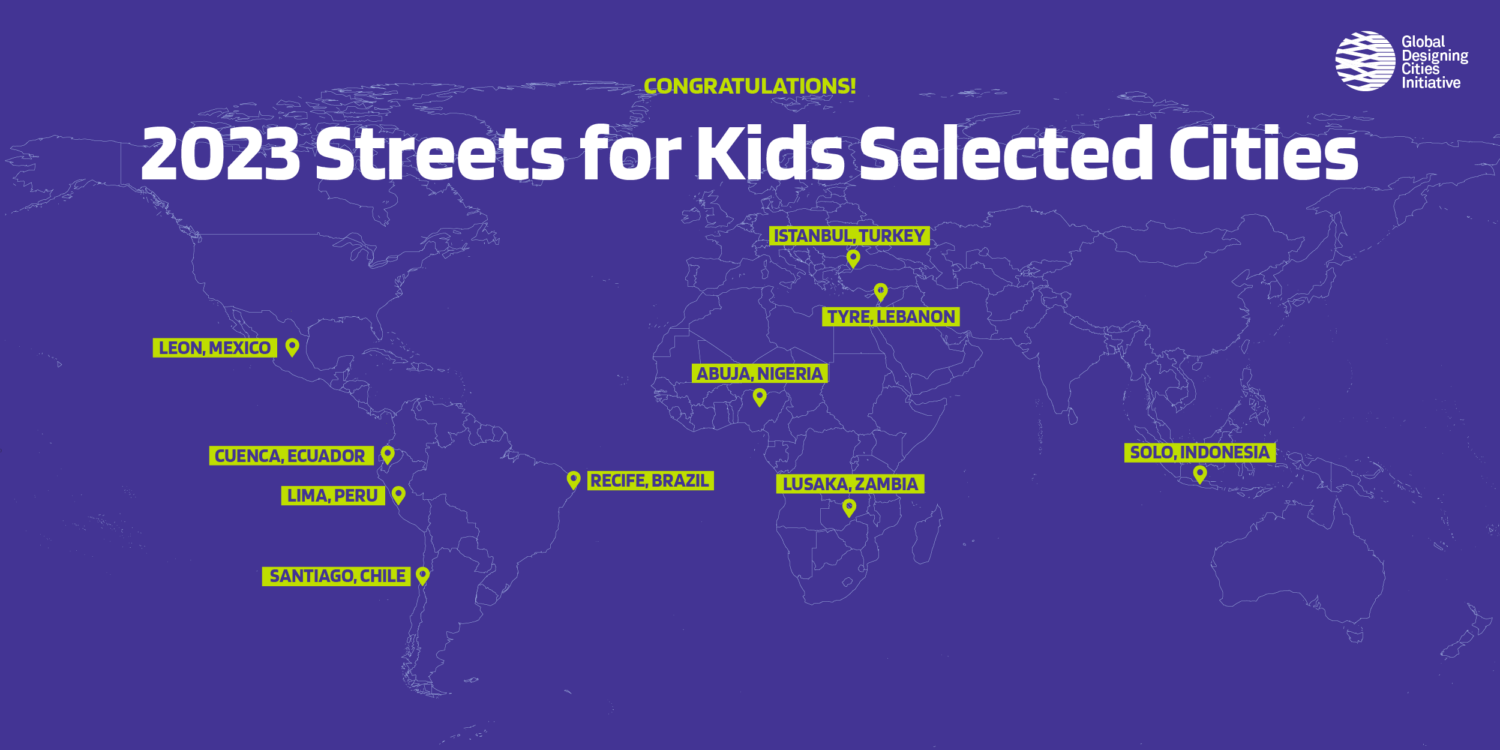Global Designing Cities Initiative announces Streets for Kids Selected Cities

Ten cities working to make streets safer, more accessible, and more enjoyable for children and their caregivers will take their work to new levels this year as Streets for Kids Selected Cities with the help of the Global Designing Cities Initiative’s (GDCI) team of experts.
Each of the 10 selected cities will receive up to USD 20,000 along with technical assistance from GDCI’s Streets for Kids team. GDCI’s Streets for Kids program aims to help improve the lives of kids in cities by inspiring leaders, informing practitioners, and empowering communities to understand cities through the lens of children and their caregivers and to take action on their streets to ensure a cleaner, healthier, and safer future. The Streets for Kids program is supported by the Bernard Van Leer Foundation, the FIA Foundation, and Fondation Botnar.
The 10 GDCI’s 2023 Streets for Kids Selected Cities are: Abuja, Nigeria; Cuenca, Ecuador; Istanbul, Turkey; Leon, Mexico; Lima, Peru; Lusaka, Zambia; Recife, Brazil; Santiago, Chile; Solo, Indonesia; Tyre, Lebanon.

“More and more cities around the world are realizing we need to plan for, design, and implement Streets for Kids,” said Skye Duncan, Executive Director of Global Designing Cities Initiative. “We are thrilled that this year’s 10 selected cities have shown that they are thinking strategically about this work and have the political courage and leadership to make it a reality.”
“Streets that are safe for kids are essential infrastructure for cities,” said Janette Sadik-Khan, GDCI chair. “By building the needs of children into sidewalks and crossings, we create the foundation for strong communities and help streets come alive with new possibilities for everyone.”
Abuja, Nigeria, is launching a comprehensive campaign to raise awareness and advocate for safer cycling conditions for kids. The initiative will include a series of open streets events, stakeholder workshops, and infrastructure enhancements to promote safe and accessible cycling for children.
Cuenca, Ecuador, has taken on the task of transforming a street near an early childhood school (ages 0-5) located in a rapidly densifying neighbourhood. The project will emphasize speed reduction, as well as connecting the school to a nearby park. With a strong focus on monitoring and evaluation, this intervention has the potential to scale up into a city-wide school street program.
Istanbul, Turkey, will transform a street near a primary school into a safe walking environment for children and create more opportunities for play through better connections to an existing open space.
Leon, Mexico, aims to promote active travel and connect DIF after-school clubs with their urban surroundings in a way that benefits the entire community. By creating safe and accessible pathways, the project will encourage students to walk or bike to their after-school clubs, which are often located in under-resourced neighbourhoods. The project also aims to enhance the urban environment by creating vibrant public spaces around the clubs that can be enjoyed by the wider community.
Lima, Peru, will revamp an intersection adjacent to an elementary school in the heart of the city’s historic centre. The school is a participant in the “Safe Paths to School” program, which aims to encourage safe and active travel for school children through physical interventions and educational initiatives. The redesigned intersection will provide a safer and more accessible route for students and promote healthier travel options for the wider community.
Lusaka, Zambia, is committed to enhancing the safety and accessibility of the street near a historic landmark and school. The Zambia Road Safety Trust has already organized five successful car-free days to demonstrate the benefits of people-first design, which prioritizes pedestrian safety and well-being. This project builds on those past successes and aims to further improve the area’s safety and accessibility.
Recife, Brazil, will make a lasting impact by permanently transforming an unpaved street to improve the safety and comfort of students and caregivers walking to school and activate an underutilized open green space to provide more play opportunities for a low-income community in the outskirts of the city.
Santiago, Chile, will trial an interim street design intervention to improve walking and cycling conditions for school children along a central commercial boulevard. The outcomes will guide future improvements at the site.
Solo, Indonesia, will create a safer and more attractive walking route near a junior high school that accommodates kids, caregivers, and seniors informed by its youth-focused participatory process.
Tyre, Lebanon, will introduce the ideas of safe and healthy streets through a series of activities, programs, workshops, and awareness sessions in collaboration with a local school in Tyre, culminating in a street design pilot on the school street. The city hopes this type of engagement and pilot project will change how residents perceive their streets and foster a call to action for the municipality.
Each city was part of GDCI’s 2022 Streets for Kids Leadership Accelerator.
“The Leadership Accelerator showed us that cities around the world are eager to make Streets for Kids,” said Anna Siprikova, Senior Program Manager of GDCI’s Streets for Kids program. “In total 20 cities were part of the original Accelerator cohort and all of them are leading the way in rethinking their streets to be better for children and caregivers.”



